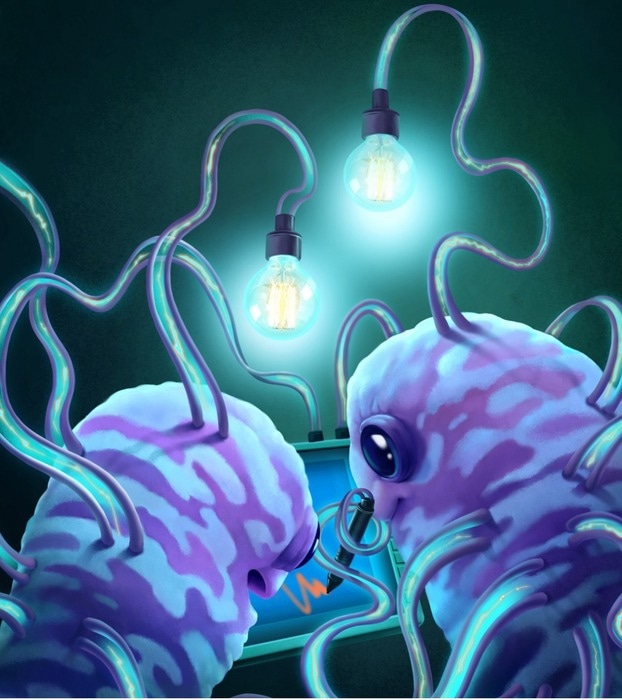Rapid climate change poses a serious and immediate threat to life on Earth. As atmospheric methane traps heat 30 times more effectively than CO2, temperatures are rising as a result.
 “Nanowires” produced by Geobacter in response to an electric field applied to electricity-producing biofilms. These nanowires are composed of cytochrome OmcZ and show 1000-fold higher conductivity and 3-times higher stiffness than the nanowires of cytochrome OmcS important in natural environments, allowing bacteria to transport electrons over 100-times their size. Image Credit: Sibel Ebru Yalcin. Design: Ella Maru Studio
“Nanowires” produced by Geobacter in response to an electric field applied to electricity-producing biofilms. These nanowires are composed of cytochrome OmcZ and show 1000-fold higher conductivity and 3-times higher stiffness than the nanowires of cytochrome OmcS important in natural environments, allowing bacteria to transport electrons over 100-times their size. Image Credit: Sibel Ebru Yalcin. Design: Ella Maru Studio
Half of this methane is produced by microbes, and rising temperatures are also boosting microbial development, which results in the production of more greenhouse gases than can be absorbed by plants. This weakens the earth’s capacity to act as a carbon sink and increases global temperatures.
Another class of bacteria that consume up to 80% of the methane flux from ocean sediments that safeguard the Earth might be a viable remedy to this vicious cycle. Due to their extreme difficulty in laboratory research, microbes have remained a mystery in terms of how they function as the principal producers and consumers of methane.
In Nature Microbiology, a Yale team led by Yangqi Gu and Nikhil Malvankar of the Molecular Biophysics and Biochemistry at Microbial Sciences Institute described the unexpected wire-like features of a protein that is strikingly similar to the protein employed by methane-eating microbes.
The group has previously demonstrated that this protein nanowire exhibits the highest conductivity currently known, enabling the production of the maximum electric power by any bacteria. However, no one has yet figured out how bacteria produce them or why they exhibit such high conductivity.
Yangqi and his colleagues used cryo-electron microscopy to examine the atomic structure of the nanowire and found that hemes were tightly packed to transfer electrons extremely quickly and with extremely high stability.
It also explains how these bacteria can create communities that can transfer electrons over 100 times the size of the individual bacteria and thrive in the absence of membrane-ingestible chemicals that resemble oxygen. To show how bacteria can produce nanowires on demand, Yangqi and the researchers also created artificial nanowires.
We are using these heme wires to generate electricity and to combat climate change by understanding how methane-eating microbes use similar heme wires.”
Nikhil S. Malvankar, Associate Professor, Molecular Biophysics and Biochemistry, Microbial Sciences Institute, Yale University
Source:
Journal reference:
Gu, Y., et al. (2023). Structure of Geobacter cytochrome OmcZ identifies mechanism of nanowire assembly and conductivity. Nature Microbiology. doi.org/10.1038/s41564-022-01315-5